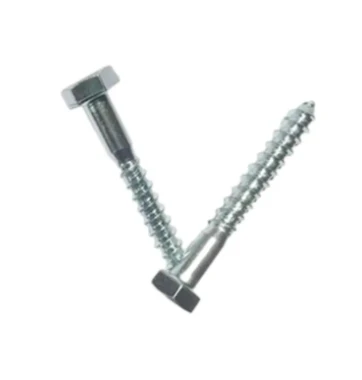Nov . 22, 2024 08:40 Back to list
m14 nut
Understanding the M14 Nut A Key Component in Engineering
In the realm of engineering and mechanical design, understanding the components that make up a system is crucial. One such component that often goes unnoticed yet plays a significant role in structural integrity and durability is the M14 nut. This seemingly simple item is essential in various applications, from automotive manufacturing to construction.
What is an M14 Nut?
The M14 nut is a type of hexagonal nut that is designed to fit an M14 bolt, which has a nominal diameter of 14 mm. The M designation indicates that the nut is metric, which means it is measured in millimeters instead of inches, as seen in the imperial system. M14 nuts are commonly made from materials such as steel, stainless steel, or brass, depending on the specific requirements of the application, such as resistance to corrosion, strength, and durability.
Applications of M14 Nuts
M14 nuts are widely used in various sectors, including automotive, aerospace, and construction. In the automotive industry, they serve as crucial fasteners that hold various components of a vehicle together, ensuring safety and reliability. For instance, they might be used to secure engine mounts, suspension components, or exhaust systems.
In construction, M14 nuts are essential for securing structural elements. They might be used in conjunction with bolts to hold beams, trusses, or frames together, facilitating a stable and safe structure. Their ability to endure high levels of tension makes them ideal for load-bearing applications.
m14 nut

Types of M14 Nuts
There are several variations of M14 nuts, each serving a specific purpose. The most common type is the standard hex nut, which is suitable for general applications. Lock nuts, which have mechanisms to prevent loosening under vibration, are also prevalent in scenarios where reliability is paramount, such as in machinery or equipment subjected to dynamic forces. Additionally, there are also flange nuts, which have a wider base that distributes load and helps in preventing damage to the surface being fastened.
Installation and Torque Specifications
Installing an M14 nut requires a few simple steps but must be done following recommended guidelines to ensure safety and effectiveness. Typically, a wrench or socket is used to tighten the nut onto the corresponding bolt. It is essential to adhere to specified torque values, as overtightening can lead to bolt failure, while insufficient tightening may result in loosening during operation.
Torque specifications for M14 nuts can vary depending on the materials used and the specific application, but it is generally advised to refer to manufacturer guidelines or engineering standards for accurate information. Proper tightening techniques not only ensure that the joint remains secure, but they also extend the lifespan of both the nut and the bolt.
Conclusion
The M14 nut may seem like a minor element in mechanical assemblies, but its significance cannot be overstated. By providing structural integrity and safety in various applications, it plays a crucial role in the functioning of many systems. Understanding the types, uses, and proper installation techniques of M14 nuts is essential for engineers and technicians alike. As industries continue to evolve, so too will the technologies and designs surrounding fasteners like the M14 nut, maintaining their place as essential components in engineering and construction.


